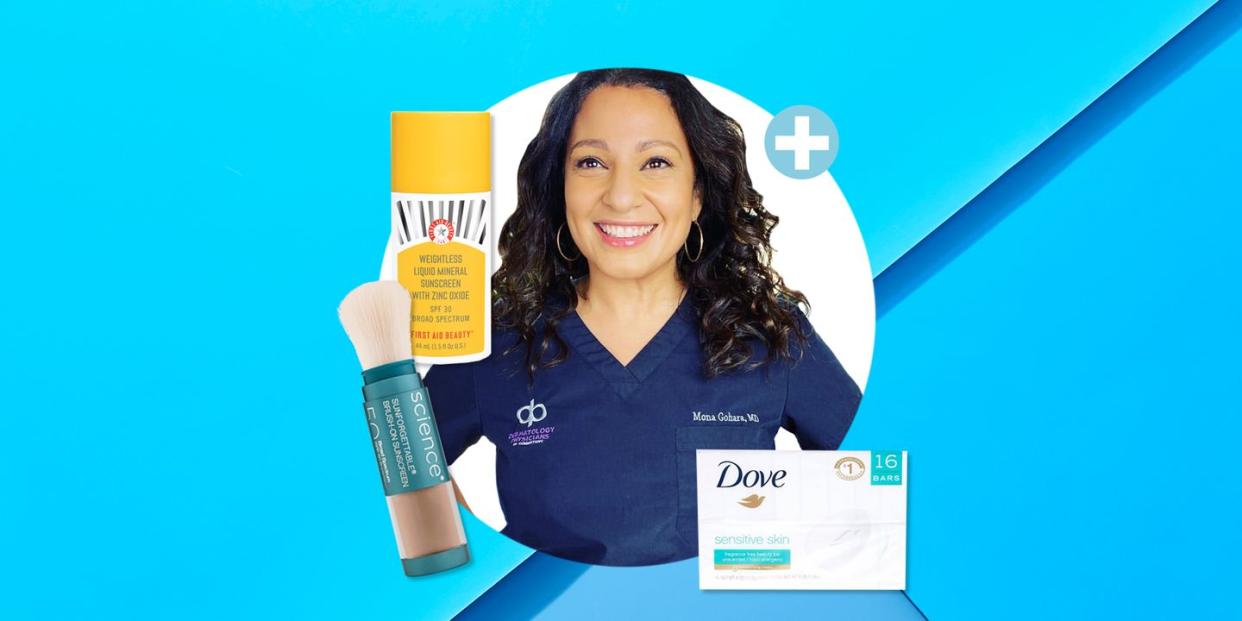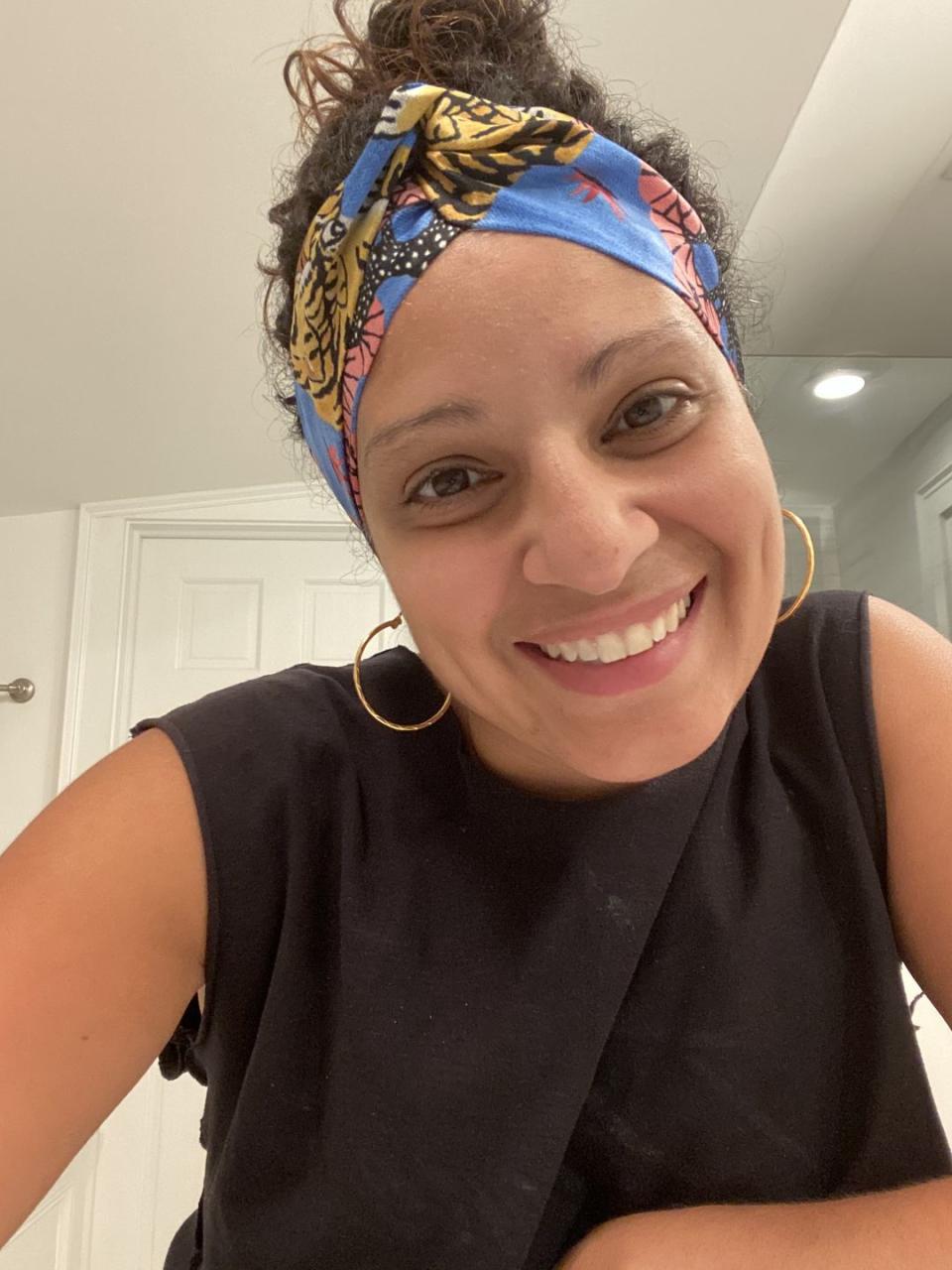“I’m A Dermatologist—Here's How I Keep My Melasma Under Control”

Dermatologists prescribe products to their patients all day long, but have you ever wondered which ones they personally use? Welcome to Derm Diaries, a series where dermatologists share their skin woes—and solutions—so you can steal secrets from their skincare routines.
It was dermatologist Mona Gohara, MD's Egyptian heritage that first sparked her interest in beauty. "Since childhood, I have been in awe of the incredible contributions put forth by the ancient Egyptians to, amongst many other things, our modern day skin routines," says the Associate Clinical Professor of Dermatology at Yale School of Medicine. "Egyptians invented the signature red lip (red ochre for lipstick), the cat eye (kohl for eyeliner), face masks of honey and milk, sugaring for hair removal—you get the idea." But she also had a love for biology and so her "beauty and bio junkie sides converged on an interest in dermatology."
When describing her skin type, Dr. Gohara says "it's brown, well hydrated, not too sensitive, with a bit more oily forehead." She says she can also rely on a regular "period pimple" on her right cheek every month—"I'm 44 and still dealing with that nonsense." The other skin issue she's constantly battling: Melasma. "Since having kiddos (14 years ago) melasma is most definitely by biggest skin issue," says Dr. Gohara. While melasma is something that never completely goes away, she says it can lessen or become more noticeable depending on how well it's managed. She blames the constant exposure to blue light, her melanin rich skin, and possible hormonal surges—all common culprits. Luckily she's found some ways to help manage it—here's what she uses on the reg.

She uses a bar as her go-to cleanser.
"I always start my day with a gentle, hydrating cleanser. With a near neutral pH, the Dove Beauty Bar deposits moisture as it cleanses with gentle surfactants. I cannot use anything harsh with melasma because it may create additional trauma and hyperpigment the skin."
She doesn't leave the house until she's applied her vitamin C serum.
"Antioxidants (like vitamin C) help to protect against UV light, and blue light (another cause of melasma) during the day. I never, ever leave home—or stay home for that matter—without putting it on. I think of it like brushing my teeth. Antioxidants are our primary defense, along with sunscreen of course, against all the things that can hyperpigment the skin during the day. In the summer I use my antioxidant morning and night, just to add extra protection against those free radicals which are the culprits behind hyperpigmentation. "
...or sunscreen.
"Next comes the holy grail of melasma treatment... SPF. NO chance of treating this condition without constant application and reapplication of sunscreen. I like mineral, tinted formulations, as they protect and blend in easily. This particular one absorbs and blends in especially well. The tint (iron oxide) also protects against blue light, which comes from screens, cell phones, and lightbulbs in our homes/offices."
She also takes an oral antioxidant for added sun protection.
"I also take Heliocare—an oral antioxidant derived from fern extract, which has been clinically proven to help with melasma. I am not a pill taker in general, I have to believe in the science, and the efficacy of the supplement."
She uses a powder sunscreen for touch-ups.
"I reapply sunscreen every two hours and this powder formulation makes it easy to do at work. I don’t want that typical coconut rum, sunscreen smell on me when seeing patients! This product eliminates that issue (no scent!) plus it absorbs mid day oils (back to that combo skin) and ensures that I am protected against blue light, and UV light coming through the windows of my office."
Retinol is a must.
"After washing at night I apply my retinol. This helps the skin to exfoliate, and enhances skin cell turnover—a key component of melasma treatment. Plus it builds collagen; a priority for me as well."
Vaseline is her night cream of choice.
"I finish with this to protect my skin barrier from further damage and to lock everything else in."
She indulges in this at-home treatment.
"Every couple of months I do The Obagi C microderm polish and mask. I leave it on for 15 minutes while I answer emails, watch Anderson Cooper, or just scroll through insta. It sloughs off dead skin cells, really drives in vitamin C, and infuses essential oils for hydration. It is a boost I need after the summer months especially when my melasma is most likely to be obvious."
She microneedles at home.
"I use an at home microneedling device to help my actives penetrate deeper and work harder."
You Might Also Like

